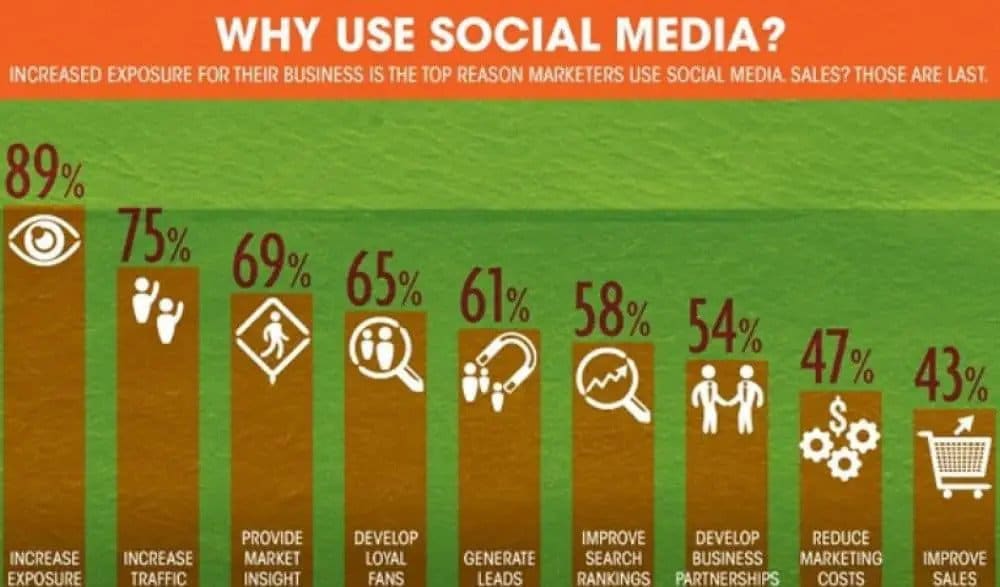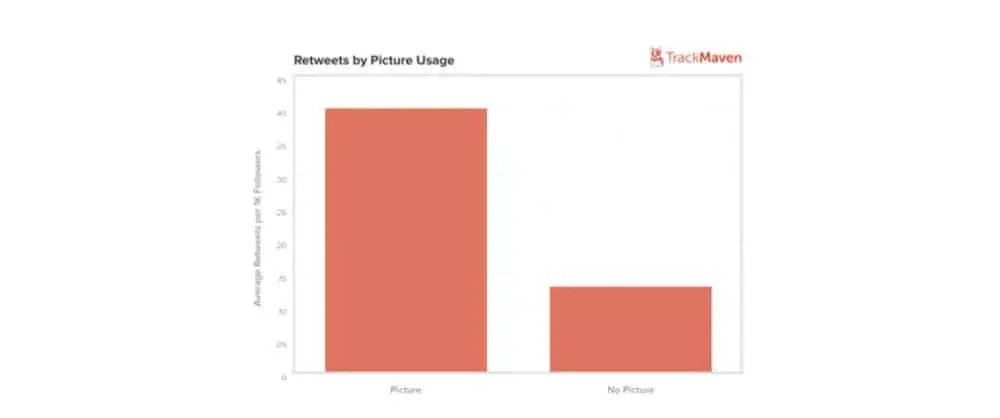SaaS Marketing Guide
Best Social Media Channels For SaaS Marketing
Book a FREE SEO Strategy Consultation >
Further Reading:
- SaaS Marketing Strategy
- SaaS Content Marketing
- SaaS SEO
- SaaS Account Based Marketing
- SaaS Email Marketing
- SaaS Inbound Marketing
- SaaS Retargeting
- SaaS Marketing Budget
- SaaS Marketing Plan
- SaaS Referral Marketing
- SaaS Demand Generation
- SaaS Customer Journey
- SaaS CMO Strategy
- SaaS link building
- SaaS Lead Generation
- SaaS Landing Page Examples
- SaaS CMS
- SaaS Customer Churn
- SaaS Marketing Automation
- SaaS Marketing Campaigns
- SaaS Marketing Agency
- SaaS SEO Agency
- SaaS Link Building Services
It’s critical for any business to get to grips with social media. The reach of social networks in modern society is extraordinary. Worldwide, there were 2.48 billion social network users in 2017, and the number is growing. Firms in all niches simply must make use of a tool that reaches such a broad audience.
Book a Consultation

(https://creately.com/blog/marketing/social-media-in-brand-building/)
Many companies have started to wise up to the potential of social media marketing. Content shared via social networks can do a great job attracting direct traffic to your site. What many people don’t understand is that you can also use social media to support your overall SEO. Correct use of the right social networks, then, can also help to build your site’s organic traffic.
This guide will point you to the four best social media channels to use for SEO. For each, we’ll offer some hints and tips regarding social media SEO best practice. Before that, though, it’s essential to look at the exact relationship between social media and SEO.
01. Understanding Social Media & SEO
Google’s algorithms take many things into account when ranking different websites. The various aspects that the search engine considers are called ranking factors. The social media following of a site or the level of social media engagement with the site’s content is not one of them. Social media SEO is not as simple as getting more followers and so more organic search traffic.
Judicious use of social media supports your SEO in different ways. Two of the best-understood examples regard backlinks and branded traffic. With a more substantial social media following, sites are better placed to get more backlinks.

(https://monitorbacklinks.com/blog/seo/relation-between-social-media-shares-and-backlinks)
The relationship between backlinks and social media following is logical. Brands with more social media followers can share their content with more people. The more people who see a piece of content, the more likely one amongst them will want to link to it from their site. The importance of backlinks as an SEO ranking factor is well-known.
How social media and branded traffic relate is even more straightforward. Branded traffic is traffic to your site from a search that features your brand or company name. Having a more significant social media following means you’ll get more branded traffic. Your social channels get your name out to a broader audience, and thus more of them will search for you on Google.
Branded traffic can also have a beneficial impact on your site’s ranking for non-branded keywords. Take, for example, an SaaS business that gets a lot of branded traffic from searches for ‘brand name SaaS’.
Google will start to notice this traffic. After a while, the search engine will recognise that the site is useful for searchers interested in SaaS. The site’s ranking for ‘SaaS’ as a unique keyword may then start to improve.
Those are just two examples of the general relationship between social media and SEO. There are lots of ways that social media can support your SEO. Which, though, are the best channels for social media SEO, and how can you make the most of them?
02. The Best Channels For Social Media SEO
If you’re going to use social media to support your site’s SEO, there are a few different avenues to explore. The following are four of the best channels for social media SEO:
Let’s look at how best to use each of them to build backlinks, boost branded traffic, and otherwise bolster your SEO.
Using LinkedIn
You know LinkedIn; it’s that social network you signed up to when you were job hunting and then forgot about it. At least, that’s how lots of people think of the platform. In reality, it’s a convenient tool for connecting with businesses and professionals in your niche. It’s also a channel you can use in a few ways to support your SEO.
LinkedIn is particularly useful for getting high authority backlinks to your site. The general process for doing so is pretty straightforward:
- Build up your LinkedIn following
- Share content from your website via LinkedIn
- Encourage further engagement with that content
- Wait for LinkedIn contents to link back to your content from their sites
Building up your LinkedIn following is a slow and steady process. You’ll need to use the platform’s advanced search feature to find and reach out to professionals in your field.

By searching for a job title specific to your niche, you can find loads of likely candidates. Try to send out contact requests to new people on a regular basis to keep your following growing.
Sharing site content via LinkedIn is somewhat idiosyncratic. Those behind LinkedIn don’t like people using the platform for direct marketing. As such, they won’t share updates with external links in them as widely as other updates.
When you first publish an update pointing followers to a page or post, don’t feature a link. Wait a couple of minutes and then edit the post to add the link. That gets around LinkedIn’s reticence to share updates that include links.
Once you’ve shared an update, try to generate some buzz and engagement. Ask followers to comment about your content or even ask them a direct question. That way, they’ll get more interested in the content and more likely to think about linking to it.
Using Facebook
It may seem odd to suggest using Facebook for SEO, or in fact, for business in general. The platform doesn’t have the same professional reach as LinkedIn. It is, however, a channel with a vast number of users. At the end of 2018, Facebook still had well over two billion active users.
The best way for modern firms to engage with those Facebook users is via Facebook groups. Groups are now the element of the platform with which users engage most. You can take advantage of this by building a group for your business or brand.
Facebook groups are an excellent way for firms to build a sense of community among followers. They also give you an extra outlet to share content with consumers more likely to find it useful. If you pitch the content right, they then might even share it more widely. That’s where you can get the backlinks and the branded traffic that are key to social media SEO.
Using Twitter
Twitter is another channel that’s great for sharing your business’s content en masse. Getting that content seen far and wide is a great first step to earning those valuable backlinks. It’s also an excellent way to get your company’s name out there to a broader audience. Using Twitter for social media SEO is a straightforward three-step process:
- Create great content to share
- Produce Tweets that are certain to get noticed
- Use social amplification tools to spread your message further
If you’re serious about SEO, you should already be producing great content. Engaging keyword optimised posts and articles are vital to effective content marketing. All you need to make sure of is that what you share with your Twitter followers will interest that particular audience.
Your next step is to think about how you’re going to share the content. Any Tweet you put out with a link to a post or page needs to capture the attention. The Tweet has to stop a Twitter follower from scrolling on by.

(https://www.socialmediaexaminer.com/get-tweets-noticed/)
Images and other visuals are great for catching the attention. Tweets with a visual element typically get far more engagement than those with only text. Questions, polls, and other interactive features are also great for getting Tweets noticed.
Once you’ve got your content and your Tweet, you need to ensure they get seen by as many people as possible. Social amplification channels like Viral Content Bee can help you boost the reach of a Tweet.
Using Pinterest
Pinterest is a final channel to consider for social media SEO. The very visual social network is growing in popularity and can help you reach a different demographic.

(https://www.clearmessagemedia.org/pinterest-bar-graph/)
The one downside to using Pinterest to support your SEO is that it takes a good chunk of time and effort. To improve your reach on the platform, you need to be as active as possible. Pinterest rewards active users. The platform makes those users’ content visible to a wider variety of other users.
You also need to produce a steady stream of engaging content. It’s your content that you want users to notice and ‘repin’ to get your name out there. An excellent way to improve your chances of getting your Pinterest content noticed is by being experimental. Try sharing content with different images and pins to see what works best for you.
03. Boost Traffic Via Smart Social Media SEO
Google doesn’t measure your social media following. Nor does the search engine assess how engaged those followers are. Social media presence isn’t an SEO ranking factor. You can use social media, though, to support your wider SEO efforts. Sharing content and engaging with audiences on social networks is undoubtedly worthwhile. It can help you gain valuable backlinks and branded traffic, both of which will help boost your SEO.
Social media SEO is similar, regardless of the channel you use. You aim to connect with as many people as possible, and to share your content with them. You’re then hoping they may share that content with their contacts and help you reach a broader audience. The guidance included here should help you do that for four of the best SEO social media channels.